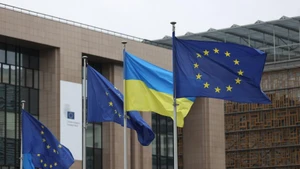The easing of epidemic prevention regulations comes at a time when many European countries are facing economic weakness, due to the pandemic and the impact of the conflict in Ukraine. As a preferred destination for migrants, Europe has always had to deal with the refugee problem, which is also a divisive issue within the EU. The number of applications for asylum in the EU has skyrocketed, with almost a million asylum applications being submitted in 2022, to the bloc's 27 member states, along with Switzerland and Norway.
Compared to 2021, this figure is up 50% and is the highest recorded since 2016. Syrians and Afghans make up the majority of asylum seekers entering the EU, around 25% of all applications. This was followed by migrants from Turkey, Venezuela, and Colombia and groups of migrants from Bangladesh, Georgia, India, Morocco, Tunisia, Nigeria and Somalia. Notably, the number of unaccompanied minors is at its highest level since 2015 at 43,000. Ukrainian nationals are not included in the statistical list, because they are under temporary protection status.
Rising illegal immigration is a major challenge that requires a continent-wide response. EU leaders called on the European Commission (EC) to immediately mobilise significant EU funds to strengthen external borders by increasing protection, strengthening infrastructure, and surveillance facilities. At the recent EU summit, EU leaders agreed on tougher rules aimed at making it easier to expel asylum-seekers, whose refugee applications are denied. The countries pledged to allow one country in the bloc to use a court ruling in another member state, to deport illegal immigrants returning to their countries of origin. This is expected to prevent migrants from going to another country to seek asylum after being rejected by the first country.
The above moves come after EU countries called on the EC to pay for the cost of reinforced border fences, to prevent people from illegally crossing borders from non-EU countries. They argue that, if the EC pays for the installation of cameras and the construction of watchtowers and infrastructure along the borders, it will encourage countries to voluntarily deduct national budgets for the erection of barriers. However, the EC President again asserted that the bloc's funds did not fund this measure.
To date, the EU has taken in millions of refugees due to conflicts in Ukraine, Syria and Afghanistan, while processing asylum applications from citizens of other countries such as Bangladesh, Turkey and Tunisia, many of which are ineligible for refugee status.
According to data from the European Border and Coast Guard Agency (Frontex), the number of illegal border crossings into the territory of European Union (EU) countries exceeded 330,000 in 2022, the highest since 2016.
Meanwhile, EU members are still struggling to find a common voice on the issue of which country is responsible for receiving, as well as the obligation of assisting migrants from neighbouring countries and partners.
Many countries favour a tougher approach to refugee policy, but some, including Germany, which is one of the countries that highlighted the benefits of migration, as well as refusing to build hard barriers, do not want to pressure the origins of migrants, by the withdrawal of development aid or visas.
Disagreements arose over controlling the flow of refugees into Europe, leaving the EU still struggling to find a solution to this difficult problem.
















